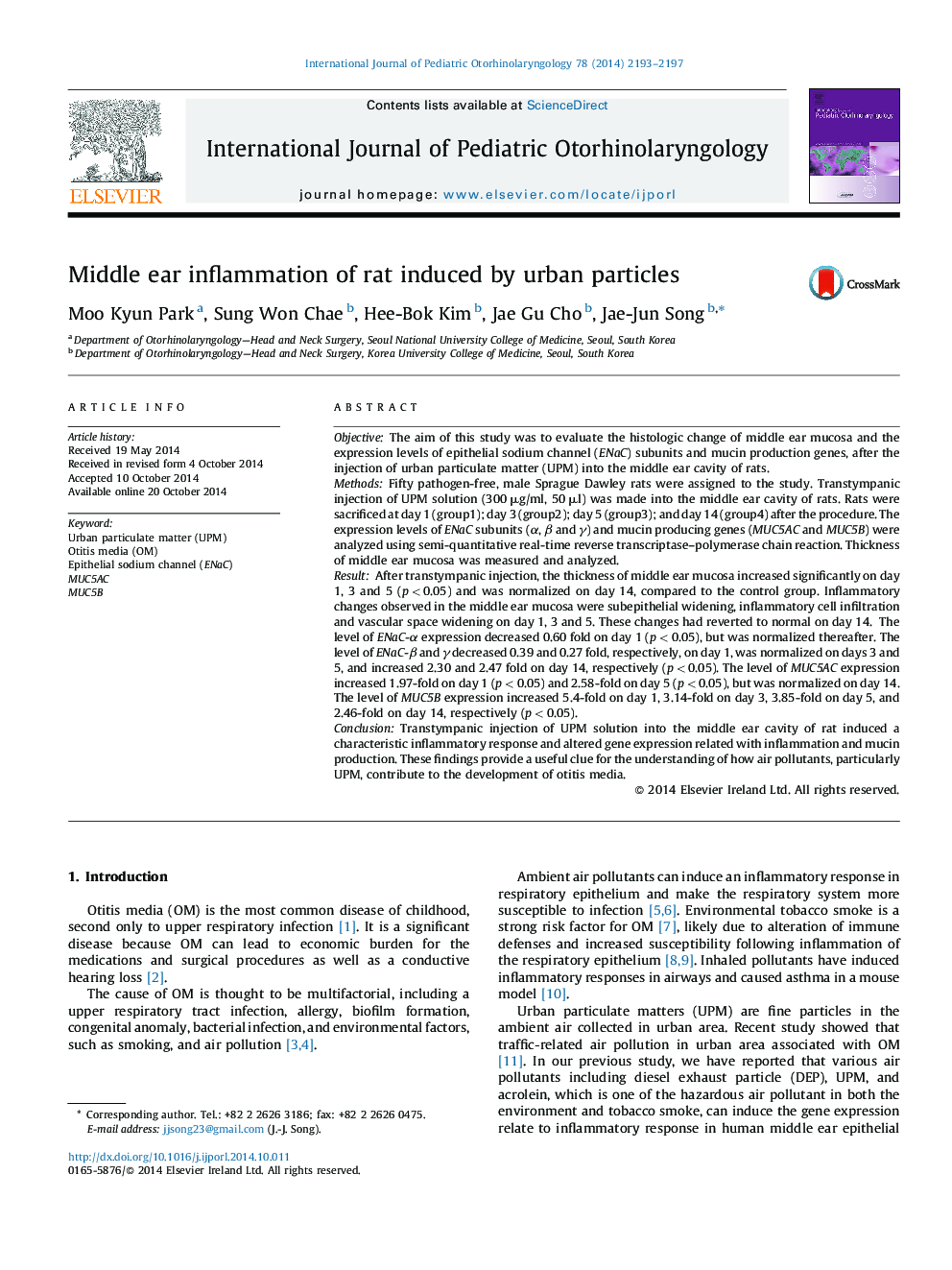| Article ID | Journal | Published Year | Pages | File Type |
|---|---|---|---|---|
| 4111807 | International Journal of Pediatric Otorhinolaryngology | 2014 | 5 Pages |
ObjectiveThe aim of this study was to evaluate the histologic change of middle ear mucosa and the expression levels of epithelial sodium channel (ENaC) subunits and mucin production genes, after the injection of urban particulate matter (UPM) into the middle ear cavity of rats.MethodsFifty pathogen-free, male Sprague Dawley rats were assigned to the study. Transtympanic injection of UPM solution (300 μg/ml, 50 μl) was made into the middle ear cavity of rats. Rats were sacrificed at day 1 (group1); day 3 (group2); day 5 (group3); and day 14 (group4) after the procedure. The expression levels of ENaC subunits (α, β and γ) and mucin producing genes (MUC5AC and MUC5B) were analyzed using semi-quantitative real-time reverse transcriptase–polymerase chain reaction. Thickness of middle ear mucosa was measured and analyzed.ResultAfter transtympanic injection, the thickness of middle ear mucosa increased significantly on day 1, 3 and 5 (p < 0.05) and was normalized on day 14, compared to the control group. Inflammatory changes observed in the middle ear mucosa were subepithelial widening, inflammatory cell infiltration and vascular space widening on day 1, 3 and 5. These changes had reverted to normal on day 14. The level of ENaC-α expression decreased 0.60 fold on day 1 (p < 0.05), but was normalized thereafter. The level of ENaC-β and γ decreased 0.39 and 0.27 fold, respectively, on day 1, was normalized on days 3 and 5, and increased 2.30 and 2.47 fold on day 14, respectively (p < 0.05). The level of MUC5AC expression increased 1.97-fold on day 1 (p < 0.05) and 2.58-fold on day 5 (p < 0.05), but was normalized on day 14. The level of MUC5B expression increased 5.4-fold on day 1, 3.14-fold on day 3, 3.85-fold on day 5, and 2.46-fold on day 14, respectively (p < 0.05).ConclusionTranstympanic injection of UPM solution into the middle ear cavity of rat induced a characteristic inflammatory response and altered gene expression related with inflammation and mucin production. These findings provide a useful clue for the understanding of how air pollutants, particularly UPM, contribute to the development of otitis media.
